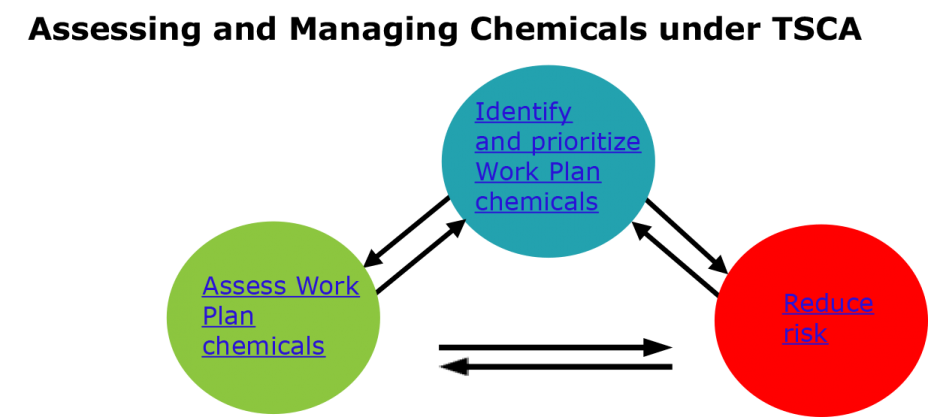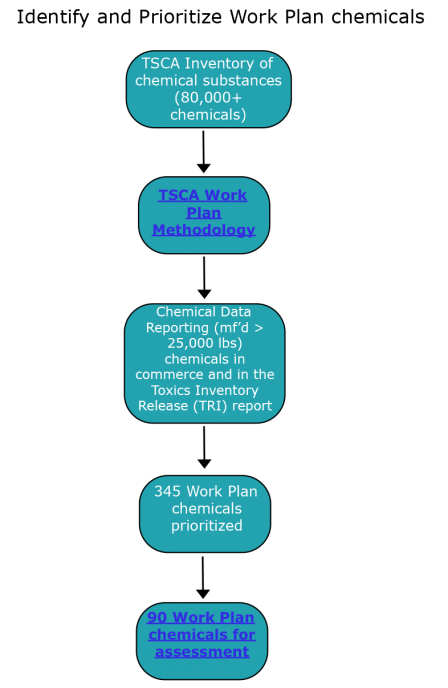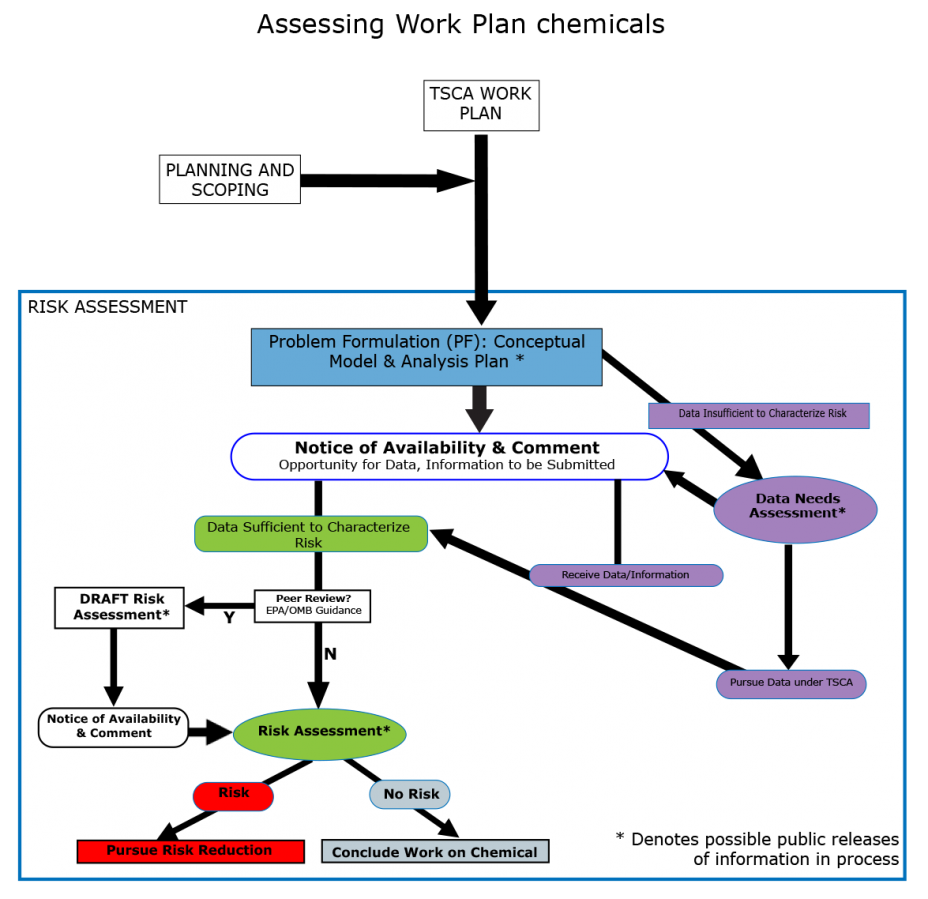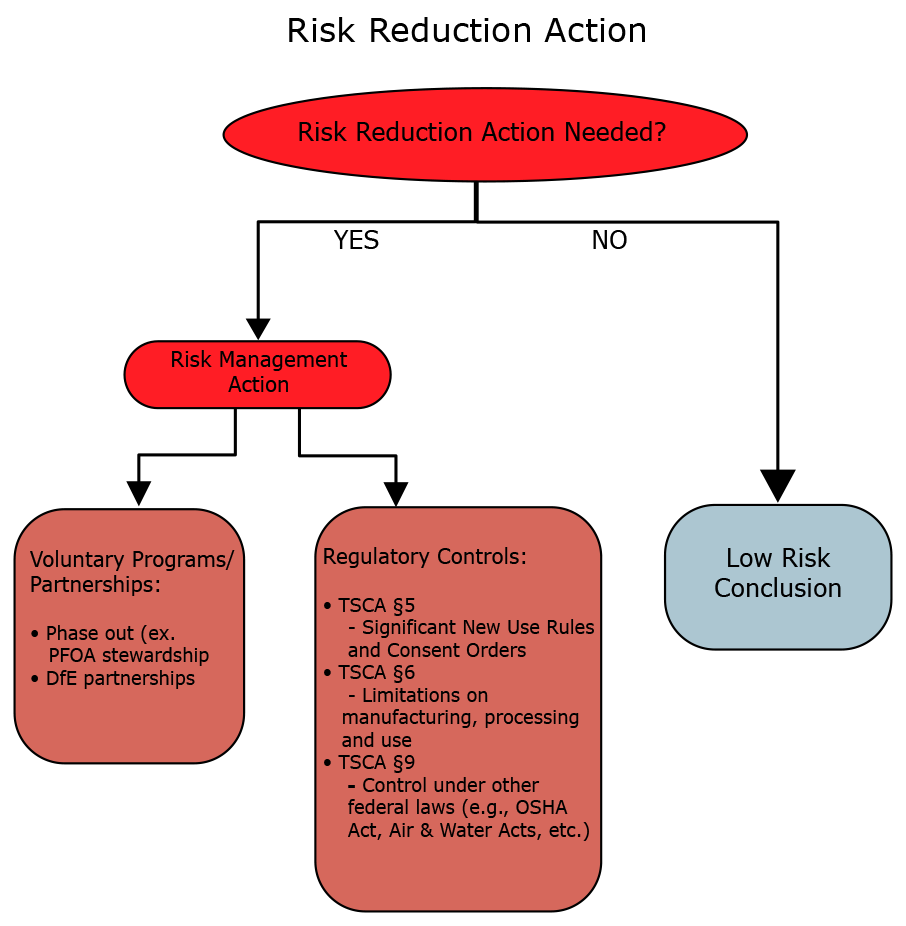How EPA Assesses Chemical Safety
Overview
Please Note
On June 22, 2016, President Obama signed the Frank R. Lautenberg Chemical Safety for the 21st Century Act, which updates the Toxic Substances Control Act. EPA will update its web pages to conform to the provisions of the statute, but until then some content may be out of date. Learn more about the new law, find summary information and read frequently asked questions.
EPA is using a multi-pronged strategy to ensure the safety of chemicals in commerce, recognizing that the current chemicals management law, the Toxic Substances Control Act (TSCA) of 1976, needs to be strengthened.
EPA's three part strategy for addressing potential risks from existing chemicals includes:
- Identifying chemicals for assessment and taking actions as appropriate;
- Increasing opportunities for industry to move toward using safer chemicals; and
- Increasing public access to data on chemicals that have been developed by EPA and/or provided by industry
In September 2009 EPA issued Essential Principles for Reform of Chemical Management Legislation to help inform efforts underway in Congress to reauthorize and significantly strengthen the effectiveness of TSCA.
The following graphic provides an overview of the process EPA uses to assess and manage TSCA chemicals in commerce.
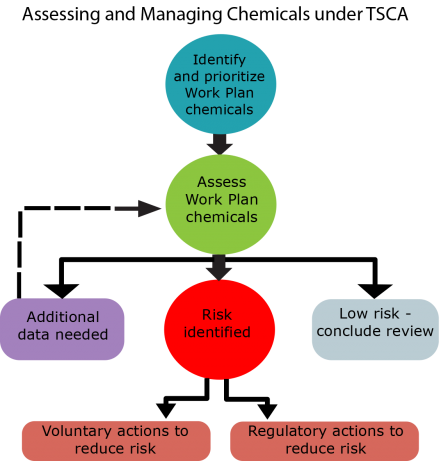
Process for Assessing Chemical Safety
EPA's process for assessing chemical safety consists of:
- Identifying Chemicals for Assessment
- There are more than 80,000 chemical substances on the TSCA Inventory of Chemical Substances.
- More than 7,600 of these chemical substances were reported as produced or imported into the U.S. in volumes of 25,000 pounds or more as part of the 2012 Chemical Data Reporting (CDR) effort.
- TSCA Work Plan. As part of its effort to prioritize chemicals for assessment, in 2012, EPA developed screening criteria to identify chemicals in commerce for further assessment and published the TSCA Work Plan. These criteria are based on a chemical’s combined hazard, exposure, and persistence and bioaccumulation characteristics.
- Learn about the TSCA Work Plan
- To view a graphic illustrating EPA's identification process, click the circle in the illustration below titled Identify and prioritize Work Plan chemicals.
- Assessing Risks from TSCA Chemicals
- Problem Formulation. As a first step in evaluating TSCA Work Plan chemicals, EPA performs problem formulation to determine if available data and current assessment approaches and tools will support the assessments. EPA supplements its Hazard Characterizations where necessary with other information available to the Agency. If problem formulation indicates risks are not likely, the Agency may conclude its work on the chemical.
- Data Needs Assessment. If problem formulation indicates that additional data are necessary in order to conduct a risk assessment, EPA will identify the data needs in a Data Needs Assessment. That data can be obtained by EPA through regulatory action under TSCA sections 4 and 8, or through voluntary partnerships with industry, such as the High Production Volume Challenge program or Enforceable Consent Agreements.
- Learn more about Data Development and Information Collection to Assess Risks.
- Risk Assessment. If problem formulation indicates the need to conduct a risk assessment, and there are enough data to do so, EPA will initiate a risk assessment which is the process to estimate the nature and probability of adverse health and environmental effects in humans and ecological receptors from chemical contaminants and other stressors that may be present in the environment. EPA will publish its peer reviewed assessments and they may be used to support risk reduction efforts.
- Learn more about EPA's assessments for TSCA Work Plan chemicals.
- To view a graphic illustrating EPA's assessment process, click the circle in the illustration below titled Assess Work Plan chemicals
- Reducing Risk from TSCA chemicals
- Risk Management Actions. If a risk from a particular use of a TSCA chemical is identified, EPA will take action to address the risks identified. Those actions may include regulatory actions, pursuant to TSCA section 5 and 6 or they may involve voluntary stewardship efforts.
- Learn more about EPA’s Current Chemical Risk Reduction Activities.
- Learn more about EPA’s Voluntary Stewardship Program for PFOA.
